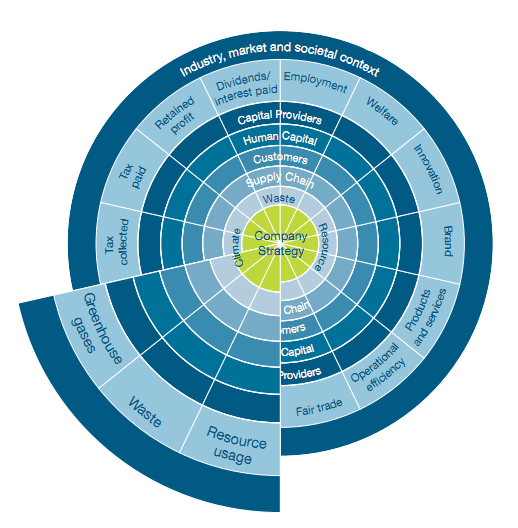 What does December 6th 2006 mean to you? Is it that it’s the anniversary of the independence of Finland from Russia, or Eire from the UK? Or is it some event which happened on that specific date: NASA declaring that it had evidence of liquid water on the surface of Mars, or the election of Joseph Kabila as president of the Democratic Republic of Congo?
What does December 6th 2006 mean to you? Is it that it’s the anniversary of the independence of Finland from Russia, or Eire from the UK? Or is it some event which happened on that specific date: NASA declaring that it had evidence of liquid water on the surface of Mars, or the election of Joseph Kabila as president of the Democratic Republic of Congo?
Or is it just the day for giving presents to children: St Nicholas’ Day or Christkindl, depending upon your Christian denomination?
Or maybe, just maybe, you were one of 200 lucky people who were at St James’ Palace, attending the launch of The Prince of Wales’ “Accounting for Sustainability” (A4S).
You have to feel a little sorry for the Prince of Wales. His heart is obviously passionate about so many things yet because of his constitutional position he can’t really follow through fully on some of his projects.
I’m not going to knife and fork the organisation’s output but the diagram above and the key elements from A4S’s 2007 report (PDF) are worth highlighting.
Accounting for Sustainability
Like all great infographics, the diagram has more and more layers to it the more you study it. For example, the company’s strategy should drive the overall operation (not financial operations drive the strategy, which then figures out where to fit other aspects in); the cross cutting nature of all activities; or making upstream supply chain more central to strategy than capital providers.
In addition, the report has five key elements which can be summarised as follows:
The narrative. This explains the general ground of why sustainability is important (yes, etc etc). However there are key emphasises within it which are noteworthy, including ensuring the sustainability reporting is strategically important (not fluff) and ensuring targets are set so that sustainability is taken into account at the strategic and investment levels (not just as a way to spin the story).
Indicators and reporting. Unsurprisingly, this is where the report’s guts are. It proposes five key environmental indicators of greenhouse gas emissions, energy use, water use, waste produced, and any other significant use of finite resources (significant meaning not just in terms of volume, but also important to the company’s operations) and strongly encourages a company to be transparent about what is material to its business. It also encourage industry benchmarks to be established and for companies to measure themselves against them.
Up- and down- stream impacts. The report gives a clear opinion that sustainability is not just about what use a company makes of finite resources, but also how its products and services impact upon upstream and downstream use of finite resources. This is a vital part of sustainability which is often overlooked.
A Lost Jewel?
I almost have to shake my head in bewilderment. This report is from 2007, yet it’s almost unmentioned in the mainstream sustainability media. Why? Reading it now, a good four years later, it’s still pretty aggressive in its progressiveness.
And, I remind you, it’s sponsored by the heir to the throne in 17 countries and attracted support from around 50 organisations, including KPMG, PWC, HSBC, Sainbury’s, Tesco, various bits of the Government, Royal Sun Alliance and (of course) Duchy Originals.
What’s almost more bizarre is that there has been precious little in the way of an update since 2006. The website was relaunched in 2008 and there have been annual fora ever since.
Things haven’t totally stagnated. A4S has established a Twitter account (415 followers) and a YouTube channel (25 subscriptions) and there is a regular newsfeed. However, the whole operation appears to be soft pedalling, as though something more important is being discussed elsewhere but we can’t chat about it here.
Why has it happened? Is it because the heir to the throne has to be politically neutral; is it because his instinct is to be opaque … or is it because business is too cowardly to grasp the simple truths this report represents?
Either way I cannot help but feel this initiative could have revolutionised the world, but it’s been left in a cold corner with minimal attention. Does anyone have a better explanation?
A former CTO, Chris has a broad and varied background. He’s been involved with blue chips, consultancies & SMEs across a wide variety of sectors and has worked in Europe, the Middle East and Australia.
In 2007 he decided to combine his knowledge of business and IT with his passion for all things sustainable and has been busy writing ever since. However, his greatest ambition remains to brew the perfect cup of coffee.